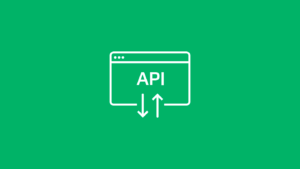Workload automation use cases: How this IT operations tool drives results
Learn how workload automation works today and how to apply it to facilitate efficient DevOps, IT operations, data processing and more.

Workload automation (WLA) has evolved from static job scheduling to a fully architectural solution for improving IT operations. Today’s automation solutions are an irreplaceable resource in various verticals and business functions, including DevOps, cloud computing and big data.
This blog explores the current use cases, benefits and future potential of workload automation software. We’ll address common questions and tell you how to harness the full capabilities of WLA.
WLA overview
WLA is the use of advanced job scheduling software and orchestration tools to automate and manage processes across an enterprise. Originally focused on mainframe environments, WLA has expanded to include hybrid cloud, multi-cloud and on-premises IT infrastructures. WLA tools enable teams to streamline operations, minimize downtime and ensure seamless connectivity between systems.
Benefits of WLA
The benefits of enterprise workload automation are wide-ranging and impact everything from day-to-day IT operations to overarching business goals. Following are some of the most pronounced outcomes.
- Cost optimization: Minimized waste due to better resource management
- Enhanced connectivity: The result of seamless integration across environments
- Improved efficiency: From automating repetitive and complex tasks
- Reduced downtime: The impact of proactive monitoring and automated alerts
- Scalability: An effect of easy adaptation to increased workload
- Service-level agreement (SLA) performance: From on-time job and workflow completion
Features of workload automation tools
Workload automation tools integrate with various IT environments and business applications so you can manage and monitor complex workflows.
The most powerful features of workload automation software include:
- Alerting and notifications: For timely responses to issues and events
- API integration: To connect and automate tasks across platforms and services
- File transfer: For securely moving files internally and externally
- Job scheduling: Automating date/time- and event-driven batch jobs
- Workflows: To build and manage end-to-end automated processes with dependencies
Key use cases for workload automation
The versatility of workload automation makes it a valuable asset across many industries and business functions. Let’s look at some of the most impactful ways to use it.
Batch processing
Batch processing is one of the most common use cases for WLA. It involves executing large volumes of jobs, such as payroll runs, invoice generation and system updates, in a sequential or parallel manner. With enterprise WLA, you can schedule and monitor these jobs without manual oversight.
For example, in the financial services industry, batch processing is critical for overnight transaction reconciliation. A WLA platform ensures all dependencies are met, files are transferred securely and reports are generated accurately, even when handling millions of transactions.
Cloud orchestration
As more organizations adopt hybrid and multi-cloud strategies, workload automation supports provisioning and scaling, cross-cloud orchestration and cost optimization.
A multinational retail corporation may use both on-premises data centers and multiple cloud providers, including SAP and Oracle products. Its workload automation platform could handle resource provisioning and scaling during peak shopping seasons to support responsive and available e-commerce. The outcome? Lower costs and higher sales.
Busy manufacturing companies like Sub-Zero Group use workload automation as the ultimate single point of control to streamline production planning, inventory management and order processing across their IT ecosystems. A range of integrations is essential for a workload automation platform being used for tasks like scheduling production runs and generating shipping labels.
Critical path monitoring
Critical path monitoring ensures that the most time-sensitive and dependent tasks in a workflow are prioritized and completed on time. WLA tools provide dashboards and alerts to track key milestones so IT teams can address potential delays before they impact downstream processes.
In a supply chain scenario, WLA can monitor critical tasks like inventory updates and order dispatch. If a delay occurs, the system will trigger alerts or reroute workflows to prevent further disruption.
Data processing and ETL
Workload automation enhances data processing and business intelligence efforts by streamlining extract, transform and load (ETL) processes and achieving timely data availability. The results are better data accuracy and shorter processing times.
When you use WLA to schedule and automate report generation, especially via a platform with convenient dashboards, you can access real-time data for analytics and decision-making.
The benefits of these applications are particularly evident in a healthcare setting. Patient data needs to be accurately extracted, transformed and loaded into a central data warehouse so it’s available on demand. Automated data management can drive strong business outcomes in an industry dependent on accurate health records, clinical reports and patient billing.
Job scheduling
Job scheduling software remains a foundational feature of WLA. It allows for the automation of jobs based on time, events or dependencies. Processes such as backups, updates and report generation run smoothly without manual intervention.
A retail company might use job scheduling to automate nightly inventory updates across its hybrid environment. That way, the latest data is available for decision-making by the start of the next business day.
Read more ActiveBatch by Redwood case studies to see the range of applications of an easy-to-use workload automation platform.
What’s coming for workload automation?
While workload automation was previously used primarily as a job scheduling tool or for managing file transfers, its scope has significantly expanded in recent years. Modern WLA solutions can handle robust orchestration, too.
It’s likely that workload automation will soon play an even more significant role in driving digital transformation and operational excellence. Here are some key automation trends and predictions that will impact this technology and how you use it.
Better integration with AI and machine learning
The integration of AI and machine learning with WLA will bring new levels of intelligence and adaptability. AI-driven automation is perhaps most useful for predicting potential issues and dynamically adjusting processes based on real-time data and insights.
Expansion of self-service capabilities
Empowering users with self-service automation capabilities will be a key focus area. By providing intuitive interfaces and pre-built templates, you can empower business users to create and manage their own automated workflows. Self-service portals also encourage immediate troubleshooting. Your IT team will be less burdened, and you’ll accelerate time-to-value.
Greater focus on hybrid and multi-cloud strategies
As hybrid and multi-cloud environments become the norm, workload automation solutions will continue to evolve to support seamless orchestration and management across diverse cloud platforms. This will include advanced features for cross-cloud data synchronization, workload distribution and cost optimization.
Increased adoption of low-code and no-code platforms
Many anticipate a rise in low-code and no-code automation platforms to democratize automation across departments and roles. The creation of automated workflows will not require extensive scripting knowledge. IT leaders are already aware of the massive time and cost savings associated with these accessible tools.
Stronger security and compliance
With increasing regulatory requirements and security concerns, workload automation platforms will continue to enhance their security and compliance features. This will include robust auditing, encryption and access control mechanisms to ensure data integrity and protect against cyber threats.
March into the future with effortless workload automation as the wind at your back. Demo ActiveBatch to discover how this technology fits with your use cases.
Workload automation FAQs
Workload automation (WLA) is the practice of using software tools to schedule, manage and monitor workflows and processes across multiple operating systems and applications within an organization. It automates the execution of repetitive tasks, such as file transfers, report generation, batch processing and data integration. WLA reduces manual intervention, minimizes human error and allows businesses to handle increasing volumes of tasks and quickly adapt to changing environments.
Modern WLA goes beyond simple scheduling by integrating with diverse enterprise systems, including ERPs, databases, cloud services and DevOps tools.
Learn more about workload automation and what solution your business needs.
The future of workload automation is bright, with continued advancements in AI, machine learning and cloud technologies driving innovation. We expect to see greater adoption of low-code platforms, enhanced integration with AI for intelligent automation and increased focus on hybrid and multi-cloud orchestration.
As organizations strive for digital transformation, workload automation will play a critical role in simplifying complex IT environments, optimizing resources and enabling real-time decision-making.
Discover the top IT automation trends as predicted by Gartner
While workload automation (WLA) and service orchestration share a focus on automating processes, they differ in scope and complexity.
Scope: WLA focuses on automating specific tasks and workflows, such as job scheduling and file transfers, while service orchestration encompasses managing and coordinating complex, end-to-end critical business processes and IT processes across diverse applications, systems and teams.
Integration: WLA can be limited to individual systems or environments, such as on-premises servers or specific applications, whereas service orchestration integrates multiple ecosystems.
Context awareness: WLA ensures tasks are executed in sequence or based on predefined conditions. Service orchestration platforms incorporate business context, enabling workflows to make decisions based on outcomes, dependencies or real-time events.
Technology: WLA is considered a foundational element of IT automation, and service orchestration builds on this capability with real-time monitoring, event-driven triggers and AI-driven optimizations.
Read the 2024 Gartner Critical Capabilities for Service Orchestration and Automation Platforms (SOAPs) to learn more.







